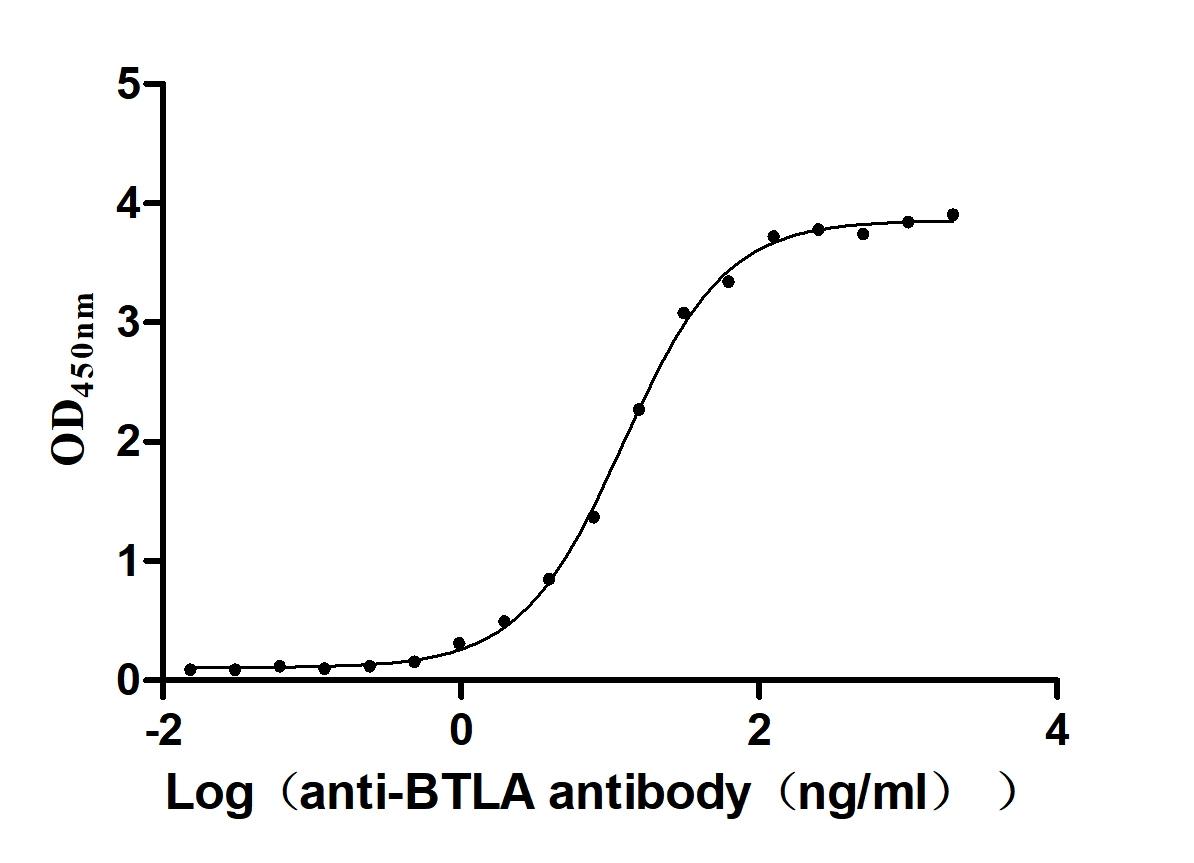Recombinant Xenopus laevis M-phase inducer phosphatase 3 (cdc25-3), partial
-
中文名稱:Recombinant Xenopus laevis M-phase inducer phosphatase 3(cdc25-3) ,partial
-
貨號:CSB-YP004996XBE
-
說明書:
-
規格:
-
來源:Yeast
-
其他:
-
中文名稱:Recombinant Xenopus laevis M-phase inducer phosphatase 3(cdc25-3) ,partial
-
貨號:CSB-EP004996XBE
-
說明書:
-
規格:
-
來源:E.coli
-
其他:
-
中文名稱:Recombinant Xenopus laevis M-phase inducer phosphatase 3(cdc25-3) ,partial
-
貨號:CSB-EP004996XBE-B
-
說明書:
-
規格:
-
來源:E.coli
-
共軛:Avi-tag Biotinylated
E. coli biotin ligase (BirA) is highly specific in covalently attaching biotin to the 15 amino acid AviTag peptide. This recombinant protein was biotinylated in vivo by AviTag-BirA technology, which method is BriA catalyzes amide linkage between the biotin and the specific lysine of the AviTag.
-
其他:
-
中文名稱:Recombinant Xenopus laevis M-phase inducer phosphatase 3(cdc25-3) ,partial
-
貨號:CSB-BP004996XBE
-
說明書:
-
規格:
-
來源:Baculovirus
-
其他:
產品詳情
-
純度:>85% (SDS-PAGE)
-
基因名:cdc25-3
-
Uniprot No.:
-
別名:cdc25-3; M-phase inducer phosphatase 3; EC 3.1.3.48
-
種屬:Xenopus laevis (African clawed frog)
-
蛋白長度:Partial
-
蛋白標簽:Tag?type?will?be?determined?during?the?manufacturing?process.
The tag type will be determined during production process. If you have specified tag type, please tell us and we will develop the specified tag preferentially. -
產品提供形式:Lyophilized powder Warning: in_array() expects parameter 2 to be array, null given in /www/web/cusabio_cn/public_html/caches/caches_template/default/content/show_product_protein.php on line 662
Note: We will preferentially ship the format that we have in stock, however, if you have any special requirement for the format, please remark your requirement when placing the order, we will prepare according to your demand. -
復溶:We recommend that this vial be briefly centrifuged prior to opening to bring the contents to the bottom. Please reconstitute protein in deionized sterile water to a concentration of 0.1-1.0 mg/mL.We recommend to add 5-50% of glycerol (final concentration) and aliquot for long-term storage at -20℃/-80℃. Our default final concentration of glycerol is 50%. Customers could use it as reference.
-
儲存條件:Store at -20°C/-80°C upon receipt, aliquoting is necessary for mutiple use. Avoid repeated freeze-thaw cycles.
-
保質期:The shelf life is related to many factors, storage state, buffer ingredients, storage temperature and the stability of the protein itself.
Generally, the shelf life of liquid form is 6 months at -20°C/-80°C. The shelf life of lyophilized form is 12 months at -20°C/-80°C. -
貨期:Delivery time may differ from different purchasing way or location, please kindly consult your local distributors for specific delivery time.Note: All of our proteins are default shipped with normal blue ice packs, if you request to ship with dry ice, please communicate with us in advance and extra fees will be charged.
-
注意事項:Repeated freezing and thawing is not recommended. Store working aliquots at 4°C for up to one week.
-
Datasheet :Please contact us to get it.
靶點詳情
-
功能:This protein functions as a dosage-dependent inducer in mitotic control. It is a tyrosine protein phosphatase required for progression of the cell cycle. It may directly dephosphorylate p34(cdc2) and activate the p34(cdc2) kinase activity.
-
基因功能參考文獻:
- Blocking mitotic entry by adding the catalytic subunit of protein kinase A results in increased wee1 Ser549 phosphorylation and maintenance of cdc25C. PMID: 16195348
- In Xenopus oocytes, p42 MAPK interacts with hypophosphorylated Cdc25 before meiotic induction. During meiotic induction, p42 MAPK phosphorylates Cdc25 at three sites, increasing Cdc25's phosphatase activity. PMID: 17382881
-
蛋白家族:MPI phosphatase family
-
數據庫鏈接:
KEGG: xla:397737
UniGene: Xl.78641
Most popular with customers
-
Recombinant Human G-protein coupled receptor family C group 5 member D (GPRC5D)-VLPs (Active)
Express system: Mammalian cell
Species: Homo sapiens (Human)
-
Recombinant Human B- and T-lymphocyte attenuator(BTLA), partial (Active)
Express system: Mammalian cell
Species: Homo sapiens (Human)
-
Recombinant Human Tumor necrosis factor ligand superfamily member 15(TNFSF15) (Active)
Express system: Mammalian cell
Species: Homo sapiens (Human)




-AC1.jpg)









